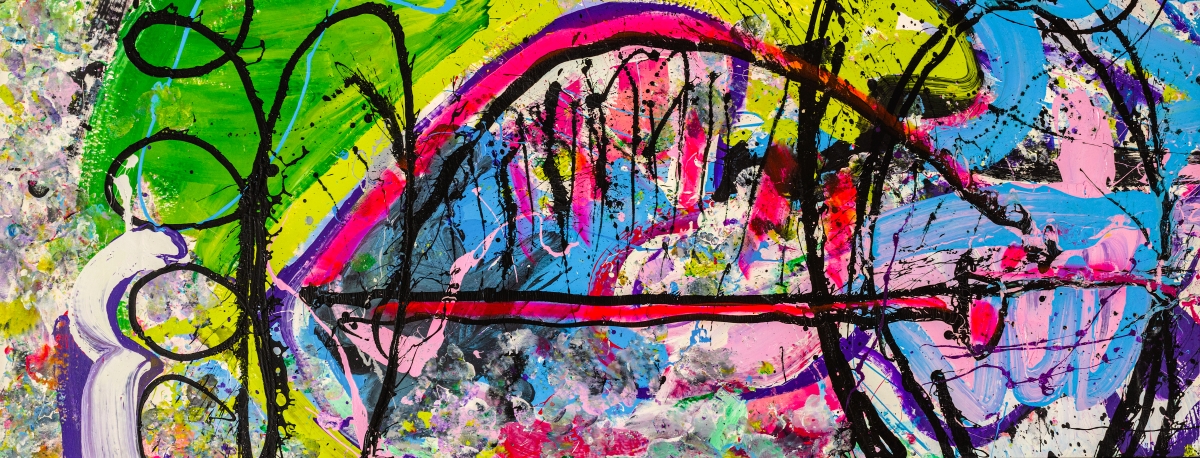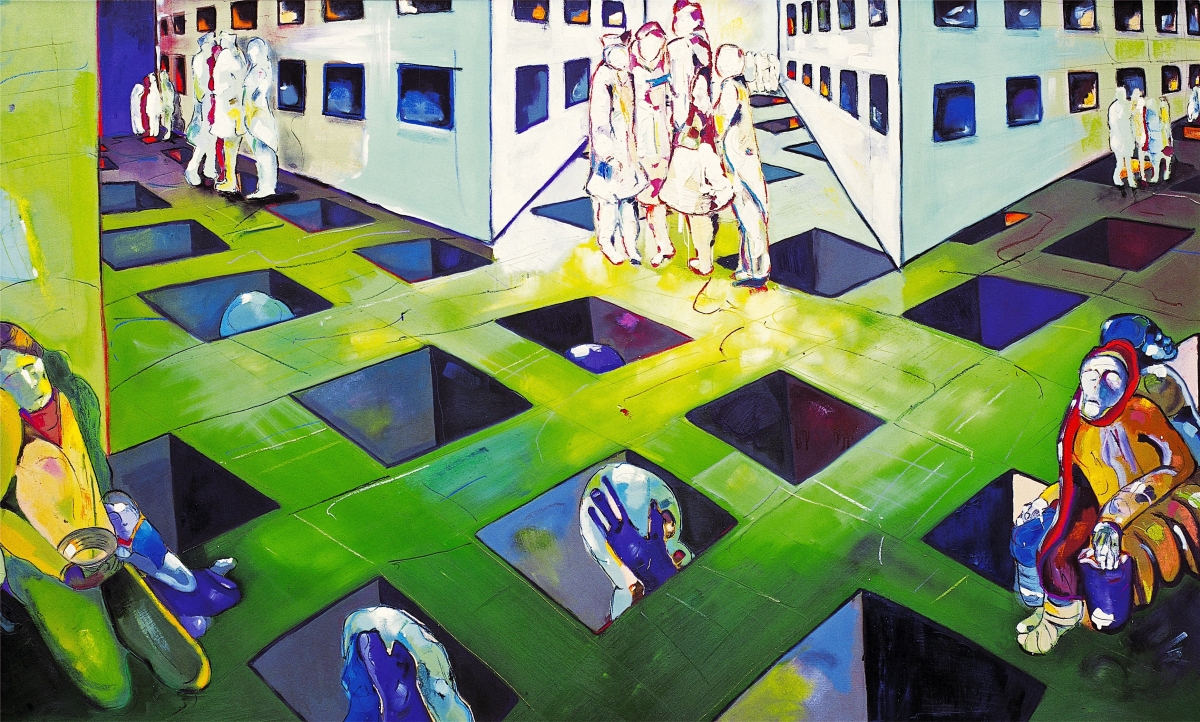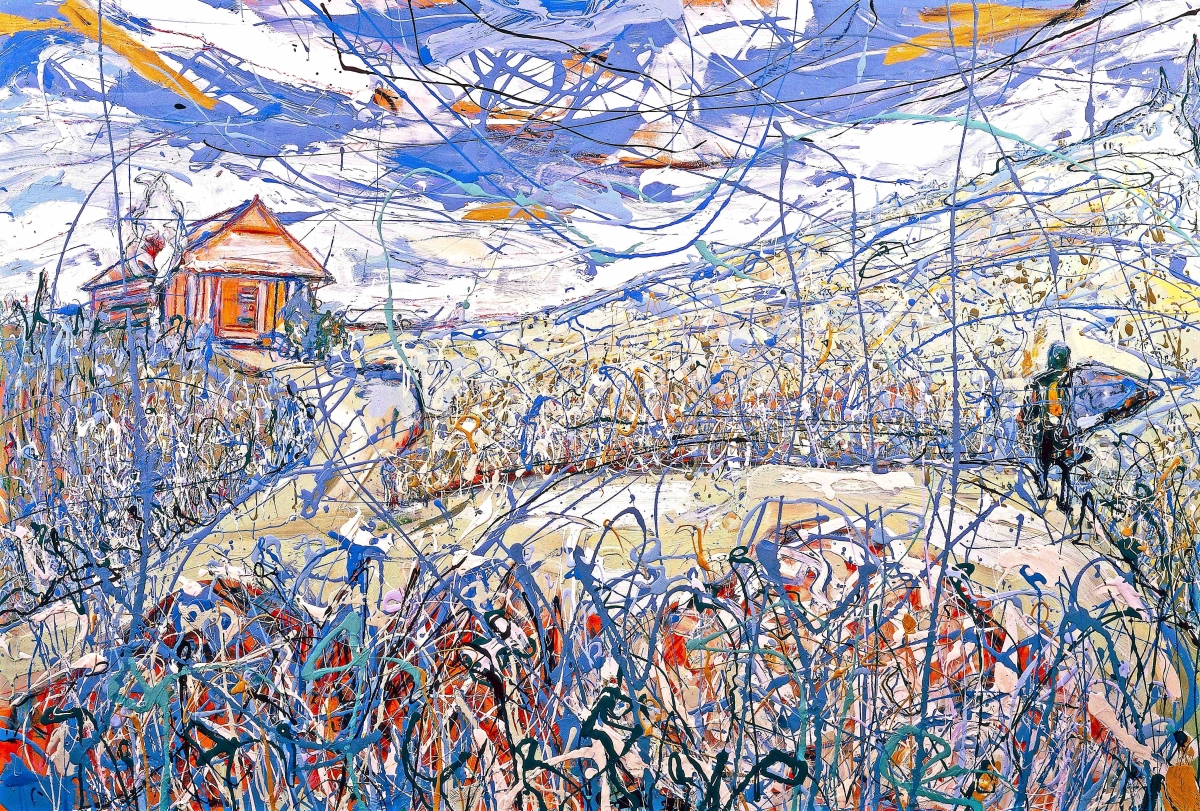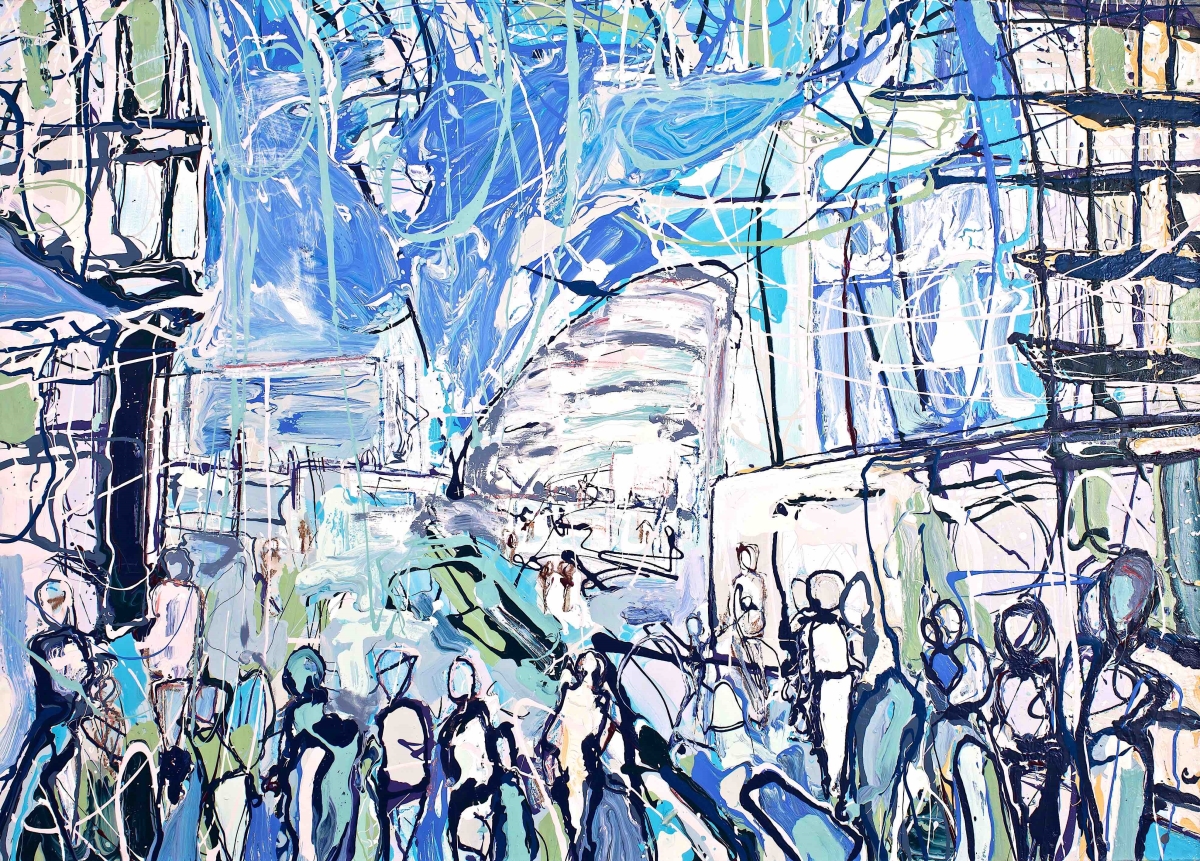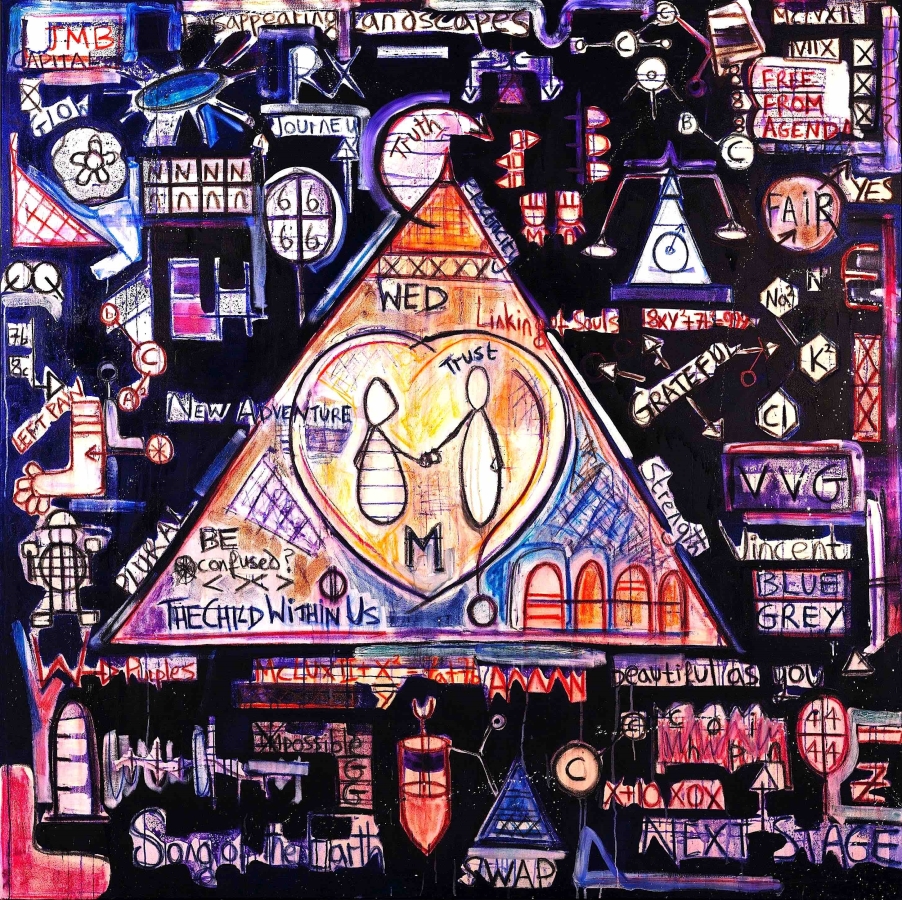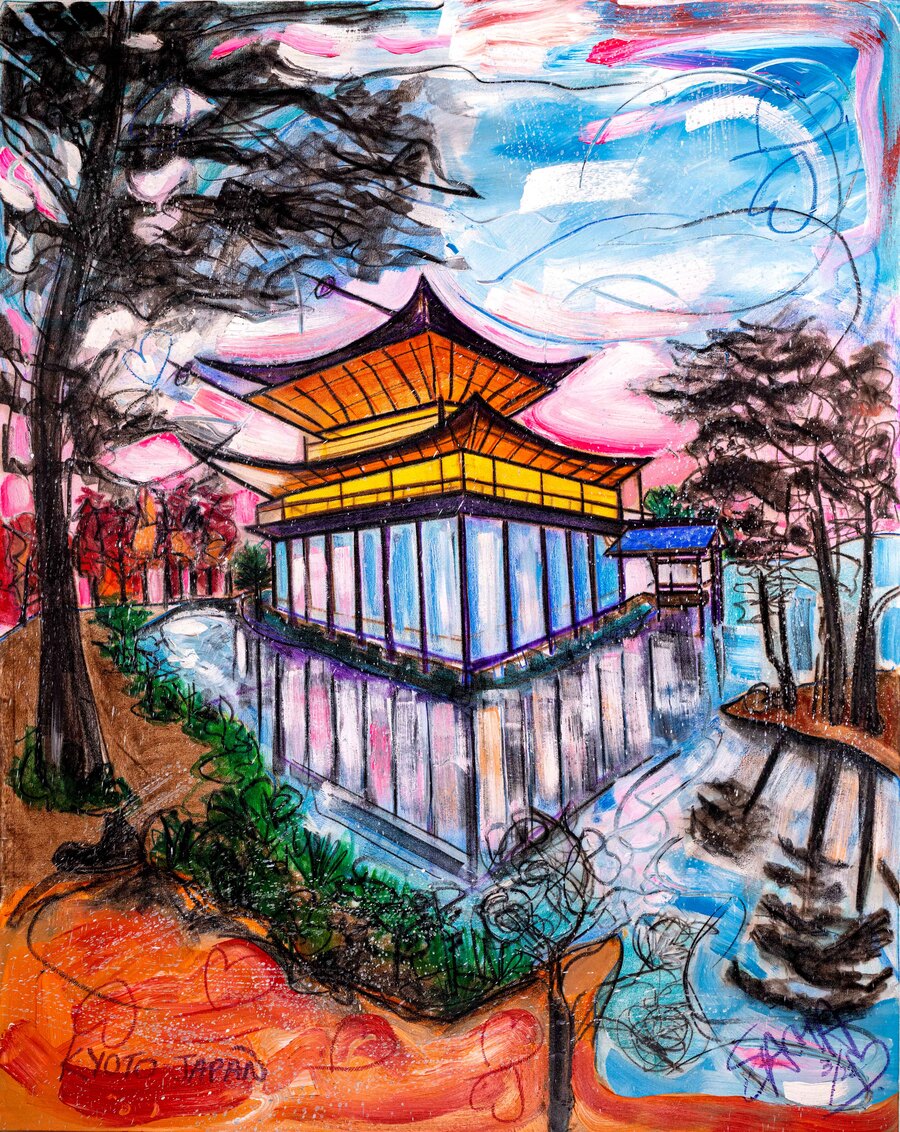Sacha Jafri is a British artist renowned for his remarkable contributions to art, philanthropy, and humanitarian endeavors. Born on January 3, 1977, in the United Kingdom, Jafri’s creative journey has been extraordinary. Throughout his career, his work has been intertwined with charitable causes, raising over $140 million for numerous charities worldwide. He has collaborated with organizations such as Dubai Cares, UNICEF, UNESCO, the Global Gift Foundation, and many more, focusing on education, health, sustainability, and equality.
Jafri’s dedication to using art to bring positive change to the world continues to drive his artistic journey. His latest ambitious project, “We Rise Together with the Light of the Moon,” involves placing a heart-shaped artwork on the lunar surface under NASA’s Commercial Lunar Payload Services Initiative (CLPS). The funds raised from this project will be directed to charities advocating for equality, sustainability, education, and health.
As a true visionary and pioneer of magical realism, Sacha Jafri exemplifies the profound impact that art can have on humanity. He believes in the power of love, empathy, and connection, and his work stands as a testament to the potential of art to change the world for the better.
Sacha Jafri was born in England and hails from the royal lineage of the Nawab of Awadh. His mother is of French descent, while his father was a diplomat who served as Pakistan’s ambassador to the Vatican. His family has a rich history, with his grandfather, Fareed S. Jafri, holding prestigious positions such as the editor of Dawn newspaper, appointed by Muhammad Ali Jinnah, and later as Pakistan’s High Commissioner to Nigeria.
Jafri’s passion for art began early in life. He attended Eton College and later pursued a master’s degree in Fine Arts from Oxford University in 2000. During this time, he embraced his artistic abilities, and at the age of 22, he chose to devote himself fully to his artistic career, forsaking his dream of becoming a cricketer.
Throughout his career, Jafri has engaged in various prestigious projects, including being commissioned by Prince Charles to create portraits of the “14 most influential living Muslims” for his Mosaic initiative. He has also served as a resident artist for the 21st Century Leaders charity. Additionally, he gained recognition for creating the cover art for musician Jack Bruce’s final studio album, *Silver Rails*, in 2014.
One of Jafri’s most remarkable achievements is the creation of the world’s largest painting on canvas, titled “Journey of Humanity.” Completed over seven months in 2020 during the COVID-19 pandemic in Dubai, the painting spans over 17,000 square feet (1,600 square meters) and holds the distinction of being recognized by Guinness World Records. “Journey of Humanity” incorporates the artwork of children from more than 140 nations, reflecting a powerful message of unity during challenging times.
In 2021, “Journey of Humanity” was auctioned in Dubai, selling for a staggering US$62 million, making it the third-highest price ever paid for a work of art by a living artist. The proceeds from the sale were generously donated by Jafri to various children’s charities, further showcasing his commitment to philanthropy.
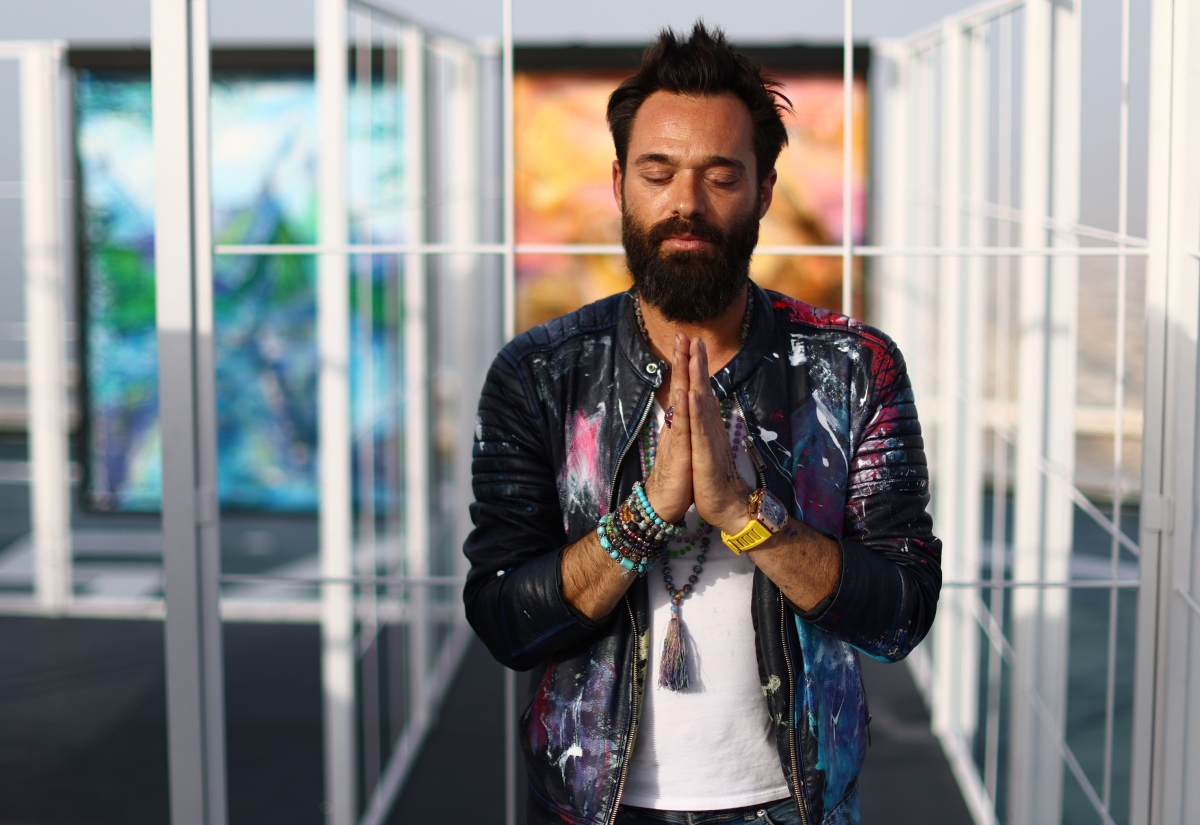
An Interview with Sacha Jafri
By Carol Real
Carol Real. Thank you, Sacha, for joining us today. We are truly honored to have the opportunity to delve into your extraordinary life and remarkable body of work, despite your busy schedule and the rarity of your interviews.
Sacha Jafri: Nice to see you.
Carol Real: Likewise, Sacha. Your contribution to the art world is truly inspiring and amazing. Your painting skills continuously surpass expectations and astonish the public. Moreover, you have been chosen to represent prominent name brands, serving as a tangible connection between them and the world of art. I would love to explore these aspects further.
Sacha Jafri: Okay.
Carol Real: Additionally, your dedication to humanitarian causes makes you one of the most influential individuals in both philanthropy and the art world. Let’s start by discussing your unique approach to creating monumental paintings. How do you tackle the process of working on such huge canvases, especially with oil paint, which can be challenging? What physical and emotional challenges do you face when working on these projects?
Sacha Jafri: Well, I believe that my 25 years of experience as a professional artist have taught me a great deal about my craft. Over time, you learn how things work, develop your artistic methods and processes, and strive to make them as beautiful and seamless as possible. It’s a journey of continuous learning. One realization I had along the way is that anyone can be an artist for a year, especially in today’s world. However, sustaining a career as an artist for five years or even 25 years is incredibly difficult. There are unexpected factors that come into play, and it takes understanding and dedication to make it possible.
For me, I discovered that when I create work connected to humanitarian causes, it possesses a poignancy and magic that elevates it from average to beautiful. That’s what I am driven to do. It’s important to note that engaging in charitable causes should not solely be based on altruism or selflessness, as society often expects. In fact, it’s the opposite. If you approach charity with complete selflessness, it becomes unsustainable because you feel like you’re constantly giving, and maintaining that for a long period is incredibly challenging. However, if you approach it for yourself, out of personal fulfillment and growth, the benefits that emerge—whether financial, raising awareness, connecting people, giving others a platform or voice, or raising funds for charitable causes—become sustainable for the rest of your life. In this way, the good you can do in the world is amplified.
Throughout my journey, I also came to understand the essence of my work and my process. I discovered that I paint in a deep meditative state, bordering on a trance. Interestingly, brainwave tests have shown that I paint in the theta state, which is typically associated with surrender. It’s a rare occurrence, as only a few notable artists like Mozart and Beethoven have achieved it. This state allows me to tap into something greater—a higher consciousness—and create within that realm.
Initially, it took me around five hours to enter that state, but over time, I have refined my process. For the past ten years, I have been playing a single song on a loop while I paint, even during marathon sessions that can last up to 48 hours without a break. This three-minute, forty-second song has become a trigger point that swiftly transports me into that deep meditative state. It’s invaluable because it enables me to create more efficiently and access that surrender quickly. Within that state, I find myself borrowing moments of magic, which I then graciously return. It’s crucial to avoid engaging the ego and thinking it’s solely your achievement. Moments of inspiration come from a deeper source when you live a life of grace, surrender, and humility. When you forget these principles and focus on yourself, you encounter what is commonly referred to as writer’s block or creator’s block, but it’s essentially a disconnection from grace.
I believe that artistic legacy and poignancy are not solely about creations or the creative process itself. It’s about how you live your life. As an artist, your focus should be on living a life of grace, and moments of beauty and inspiration will naturally emanate from that. I also believe that we are made of energy, and our most profound communication occurs through the energy we emit, which is formed by our intentions. When our intentions are pure and refined, the energy we transmit vibrates at a higher frequency. By infusing my paintings with these purified intentions, they can resonate with the viewer’s subconscious and act as catalysts for change. This, to me, is the true legacy—an energy that connects with the viewer’s soul.
In essence, the fundamental aspects of humanity and art are love and empathy. We often overcomplicate these matters, but when love, empathy, art, and humanity converge. The results can be incredibly powerful, leaving a lasting impact on our world. That’s what I strive for in my work.
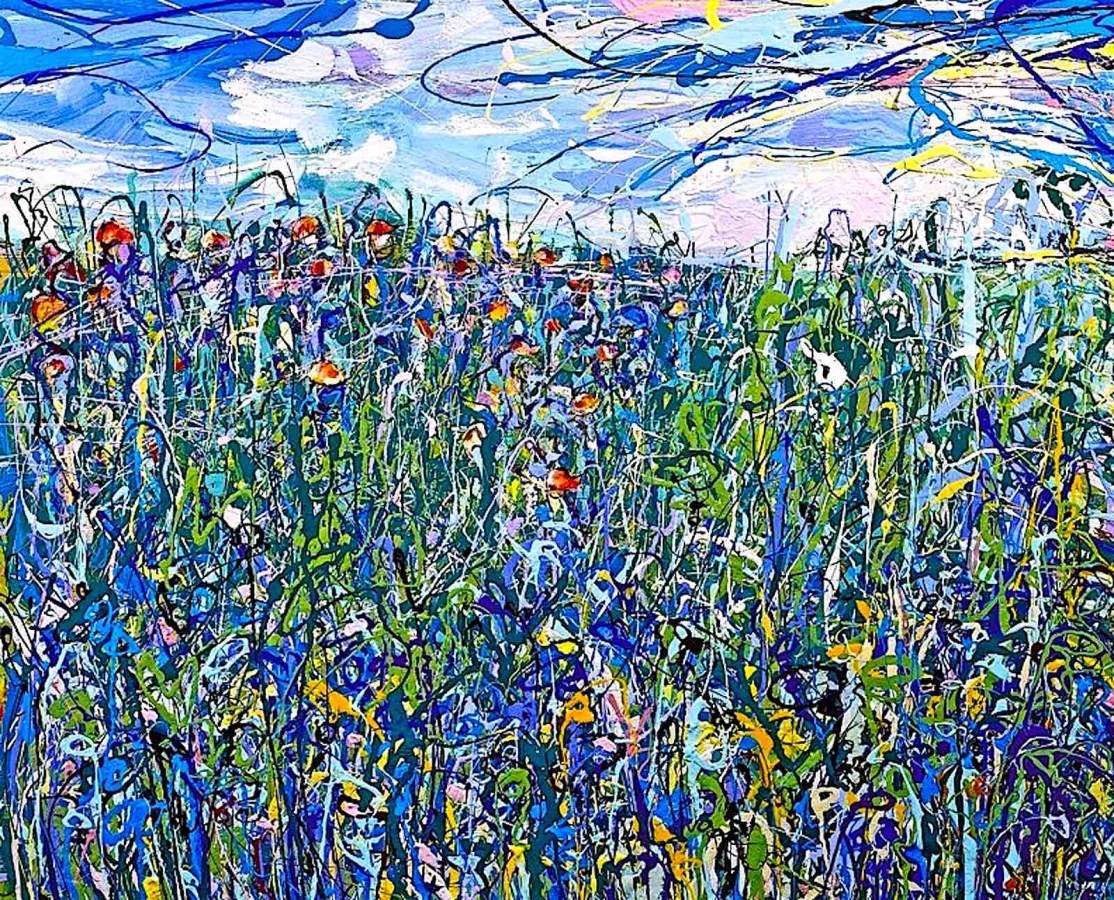
Carol Real: I appreciate how deeply philanthropy is intertwined with both your personal life and your work, as you are dedicated to bringing visibility to those who are often overlooked and unheard. Your commitment to these causes is evident in your work, including your collaborations with charitable organizations. How do you select the causes and charities you collaborate with?
Sacha Jafri: Thank you for recognizing the importance of this aspect in my work. Over the course of my 25 year journey, I realized that charitable foundations attract both the best and the worst people in society. It is unfortunate, but true. Many individuals with hidden agendas, ambition, ego, and vanity find their way into charity work, which is disheartening. These individuals lack an understanding of love, empathy, compassion, and the ability to disconnect from their ego. They are primarily focused on projecting their own voice and using charity as a platform for that. However, I have also encountered some exceptional individuals who embody the true spirit of charity.
Discovering those special individuals and organizations is a magical experience. When you find a charity or foundation led by someone who genuinely cares and has the intention to make a positive impact, you realize the immense good they can do in the world. Their actions create a ripple effect, inspiring other charitable foundations and communities to contribute in the right way and with the right intentions. The process of selecting the right causes and charities involves trial and error. Sometimes, the bigger entities may not always be the right fit. In my experience, it is essential to focus not only on what we create or achieve but also on the intentions behind our actions. The legacy we leave behind is defined by the energy and intentions we emit into the universe. When you encounter someone with genuine intentions, it becomes evident through their vibrations and energy. It is something that cannot be faked. Therefore, the selection process involves observing and connecting with people based on their vibrations and judging them based on their goodness. I have been fortunate to find some remarkable people in the realm of charity.
Carol Real: Rolls-Royce unveiled its unique ‘The Six Elements’ Collection: six Rolls-Royce Phantom Series II cars, each featuring a Bespoke piece of art, at a private gala ceremony in Dubai. How did the collaboration between Rolls-Royce and you emerge? What is the significance of the name ‘The Six Elements’? Additionally, what is the purpose of the fundraising NFT in each car and how does it contribute to charitable causes?
Sacha Jafri: The collaboration with Rolls-Royce was an incredible opportunity that originated from Torsten Müller-Ötvös, the CEO of Rolls-Royce Motorcars, which is based in Goodwood, England. César Habib, an amazing individual who manages Rolls-Royce in the Middle East and North Africa (MENA) region, reached out to me with their desire to collaborate. They wanted to create the first-ever co-branded Rolls-Royce, which was a significant proposition considering Rolls-Royce’s 140-year history. Prior to this, they had never created a co-branded car from their factory in Goodwood. Previously customers could only personalize their Rolls-Royce with their own branding or logos. Their stringent guidelines ensure perfection and deliverance, making it one of the most protected and prestigious brands globally.
Being approached to create a series of co-branded Rolls-Royces was a tremendous honor. I devised the concept of ‘The Six Elements,’ which encompasses earth, wind, water, fire, air, and humanity as the sixth element. I painted six pieces that were incorporated into the dashboard, or as they refer to it, the gallery, of the Phantom Series II, the flagship Rolls-Royce model. Rolls-Royce extended the top of the range and enhanced it further for this special series. Each painted piece represented one of the elements: earth, wind, water, fire, air, and humanity. We collaborated on the selection of colors and detailing, using unique exterior paint that had never been used before and would never be used again. The interior colors were derived from my paintings, and the hand-stitched upholstery incorporated colors from the artwork as well. Each car had my heart logo and the name of the corresponding element. Additionally, we created the first-ever artist-designed and bespoke Spirit of Ecstasy, the iconic lady at the front of the car. Each artwork and element were exclusive to each vehicle.
The collaboration was a fusion of artistry, design, and manufacturing. It was an extraordinary process where my passion for creating colors, shapes, and energy aligned with Rolls-Royce’s dedication to perfect manufacturing quality. The resulting cars are truly exceptional and have been declared the most valuable Rolls-Royces ever produced by the company, according to the CEO. The unveiling took place at the Four Seasons Hotel in Dubai, and the project raised a substantial amount of money for four charitable causes focusing on health, education, and sustainability. It was an absolute honor to collaborate with Rolls-Royce on this meaningful endeavor, which aims to make a difference in the lives of children and contribute to the future of our world.
The concept behind the NFTs is that we call “the car that keeps on giving.” When you purchase the car, you not only own a unique work of art, but you also receive an NFT. The NFT is a digital asset that provides a fly-through experience of your car. The special aspect of these NFTs is that whenever they are sold and resold, 100% of the royalties from those sales are donated to charities. So while the person who buys the car enjoys ownership of the physical vehicle, the NFT ensures that the car continues to generate funds for the chosen charitable organizations. It’s a remarkable initiative that can raise hundreds of millions of dollars and truly make a difference in our world.
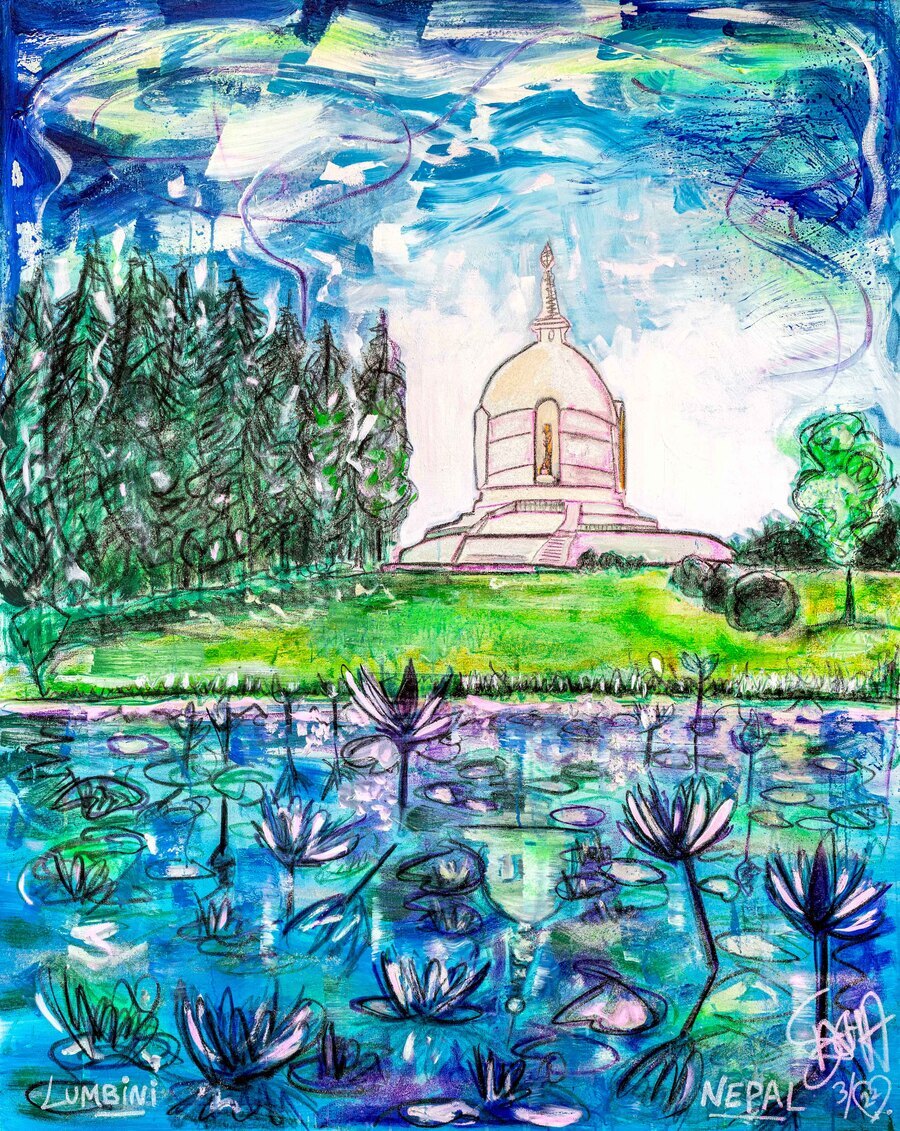
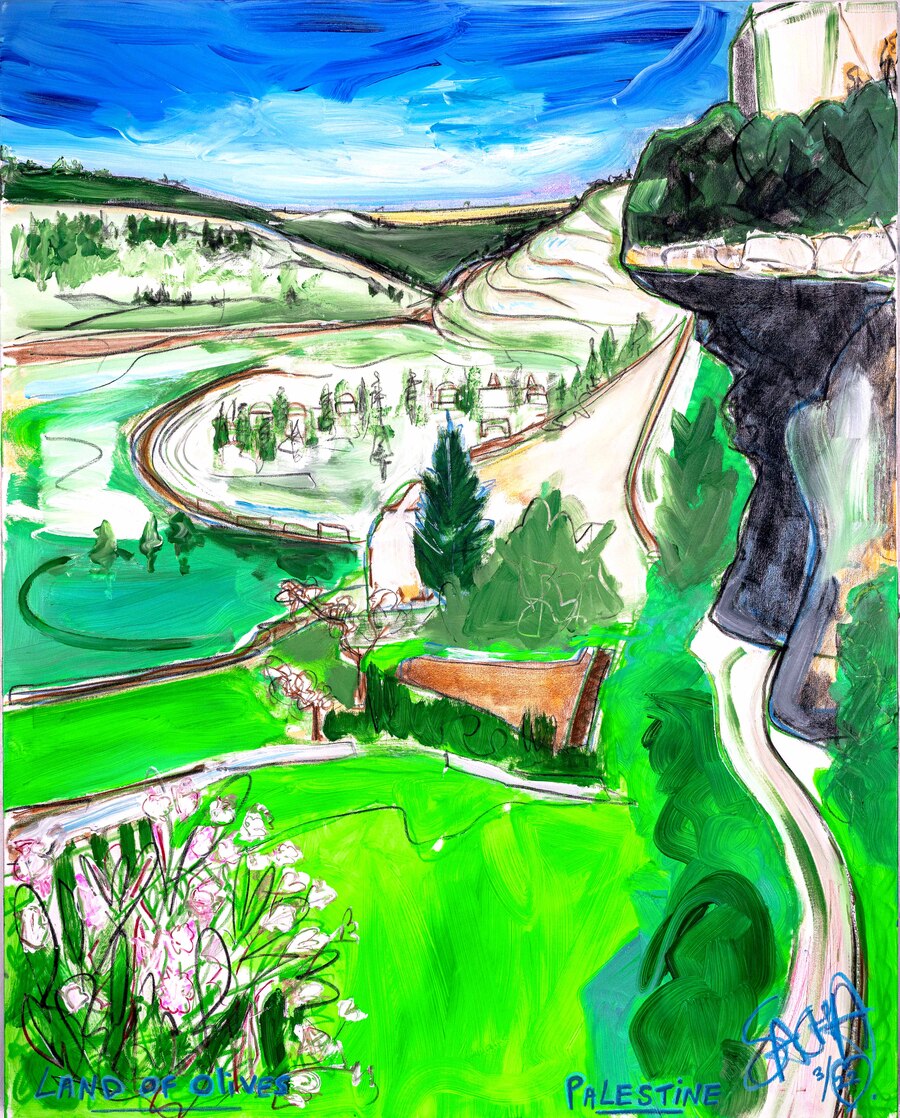
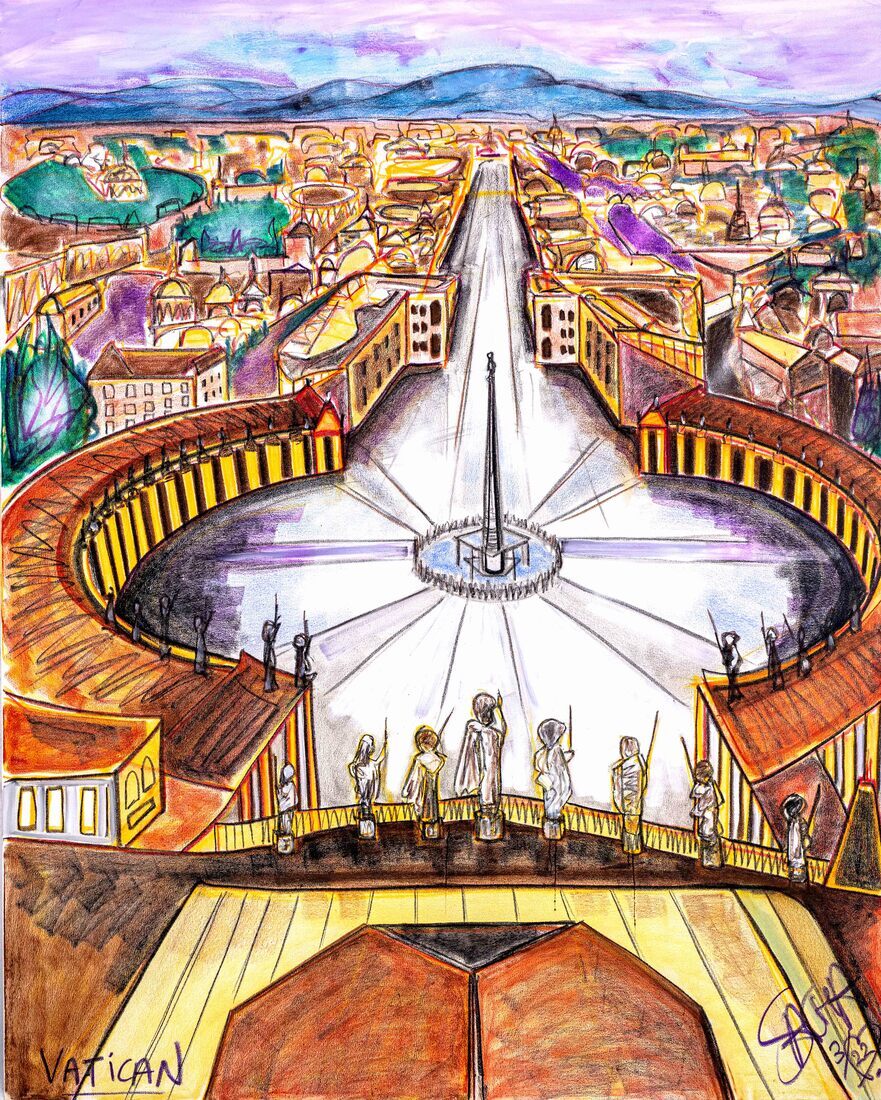
Carol Real: I would like to discuss your latest project, King Charles III Coronation.
Sacha Jafri: Absolutely. It’s a recent and significant project for me. The painting was commissioned by the British Embassy to celebrate King Charles III’s Coronation. What makes it even more meaningful is that the painting serves as a gift from the British embassy to HH Sheik Mohammad Bin Rashid Al Maktoum and the ruling family of Dubai.The British and UAE royal families share a longstanding and integral relationship. The British embassy in Dubai was the first embassy established there, and their connection goes beyond diplomatic ties. It’s a beautiful relationship that encompasses the embracing of all faiths, as demonstrated by the presence of various religious establishments in Dubai, including serval synagogue, a Christian churches, and mosques, and Hindu temples all coexisting peacefully. This harmony is an inspiration, and I feel honored to be involved in this project.
Carol Real: What is the historical bond between the British and UAE royal families that is celebrated in the painting?
Sacha Jafri: The historical bond between the British and UAE royal families is one of the aspects I wanted to highlight in the painting. Personally, it holds a special significance because of my longstanding relationship with the British royal family. Over the past decade, I have collaborated with Prince William and his charity, the Royal Foundation. Through my art, we supported initiatives like the Heads Together campaign, which raised funds for mental health causes. Similarly, King Charles and his Prince’s Trust have been actively involved in embracing different faiths and supporting minority communities, providing opportunities and platforms for those in need. His commitment to sustainability, conservation, and heritage resonates with my own values. Hence, it was meaningful to portray him not just as a monarch but also as a compassionate human being. I aimed to convey his vulnerability, self-questioning, and passion for positive change. The painting showcases his vision for sustainability, renewable energies, and his dedication to making a difference.
Carol Real: What are your points of inspiration for the painting, King Charles III Coronation? Additionally, could you provide more insight into the painting’s symbolism, as well as the style and techniques you employed?
Sacha Jafri: Absolutely. I wanted the painting to be surprising and break away from the traditional portrayals of monarchs. I aimed to depict King Charles III’s human side, emphasizing his vulnerability, self-doubt, and compassion. The media often amplifies singular moments, shaping public perception unfairly. I wanted to challenge that and showcase the true essence of the man he is. The painting features pink hearts and a soft, light-filled atmosphere that symbolizes love, empathy, and passion. Additionally, the water surrounding him represents reflection, emphasizing his introspection and continuous self-questioning. I wanted to emphasize that a monarch, like any human being, goes through various emotions and strives for self-improvement. The artwork also includes references to King Charles’ commitment to sustainability, such as his efforts towards zero emissions and conservation projects. His family members, like Prince William and Princess Catherine, are also depicted, highlighting their connection and shared values. Overall, the painting aims to provide a comprehensive understanding of King Charles III while celebrating the upcoming COP 28 environmental meeting in Dubai, which signifies a significant collaboration between the UAE and the UK governments.
Carol Real: What does it mean for you to unite your two favorite countries, the UK and the UAE, through this painting? How do you personally connect with this artwork?
Sacha Jafri: Yes. I’m British.
I was born in England and educated at Eaton Oxford. So I have a strong British background. England is my home, but I’m currently living in Dubai with my daughters attending school here. So these two places hold a special significance for me. Having the opportunity to bridge the connection between them through a painting is a beautiful prospect. Moreover, I believe that both countries will contribute greatly to Cop 28 and the necessary changes that need to be made for a sustainable future. I’m actually working on a painting for Cop 28, which is incredibly exciting and serves as a precursor to the event.
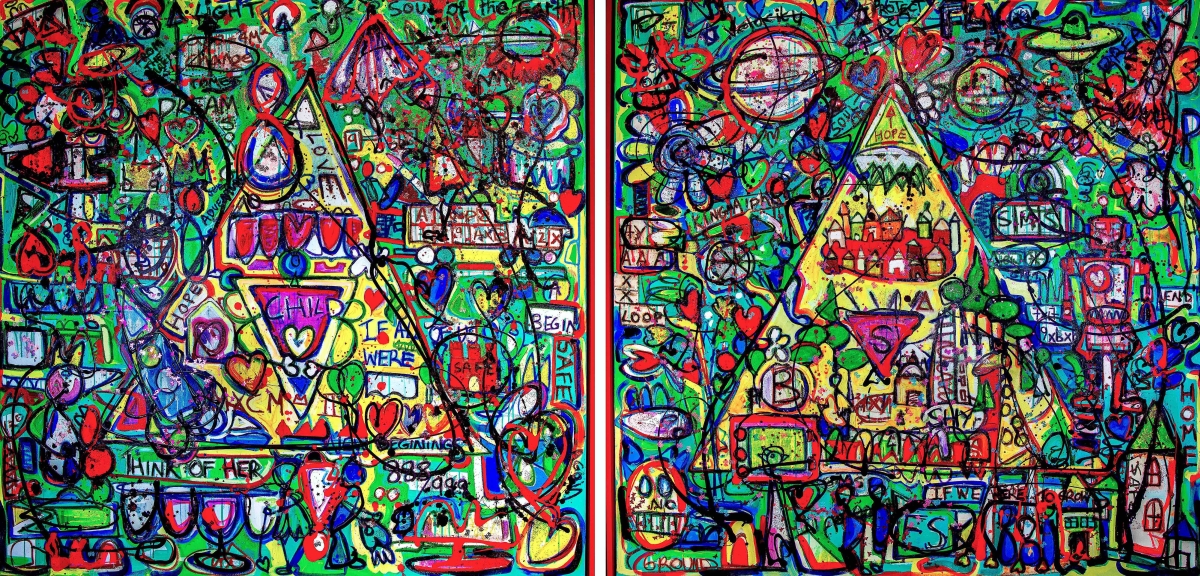
Carol Real: You have been involved in numerous remarkable projects, including We Rise Together by The Light of the Moon. You are the first artist to have your artwork installed on the lunar surface, immortalizing it on the moon forever. Could you share how this project originated?
Sacha Jafri: Actually, it wasn’t my idea. It originated from a company called Space Bit, which partnered with NASA for this endeavor. They approached me with the concept of placing the first official artwork on the moon. Initially, I had reservations because, like many people, I questioned the allocation of funds to space exploration instead of addressing pressing issues on Earth. However, I realized that space exploration will continue regardless, just like the development of the metaverse. So, I saw an opportunity to engage in a project that could tangibly benefit humanity on Earth.
I agreed to participate but with the condition that the project had a charitable element and a meaningful purpose. I presented my idea to the five partners involved: NASA, Space Bit, Astrobotic, Blue Origin (Jeff Bezos’ rocket company), and Selenian. I proposed creating a work of art titled, We Rise Together by The Light of the Moon, featuring my heart motif with two interconnected figures symbolizing the reconnection of humanity. The artwork would be set in a utopian world filled with flourishing flora, fauna, wildlife, and ocean life—a representation of the world we can achieve through reconnecting and elevating our consciousness.
This concept held immense power, as the moon serves as Earth’s natural light source during the dark night. By illuminating my painting, it symbolizes the emergence of light from darkness and the potential for humanity to reconnect, understand one another, and instigate positive change. The artwork contains 88 hearts, and once the physical piece lands on the moon, 88 NFTs will be released back to Earth at the exact moment of landing. This charitable aspect will generate funds for important causes such as health, education, sustainability, and equality. Ultimately, this project is a mission to space for the benefit of humanity, and I’m truly excited about its potential impact.
Carol Real: It sounds truly spectacular.
Sacha Jafri: Indeed, but we are reliant on a soft landing to ensure its success.
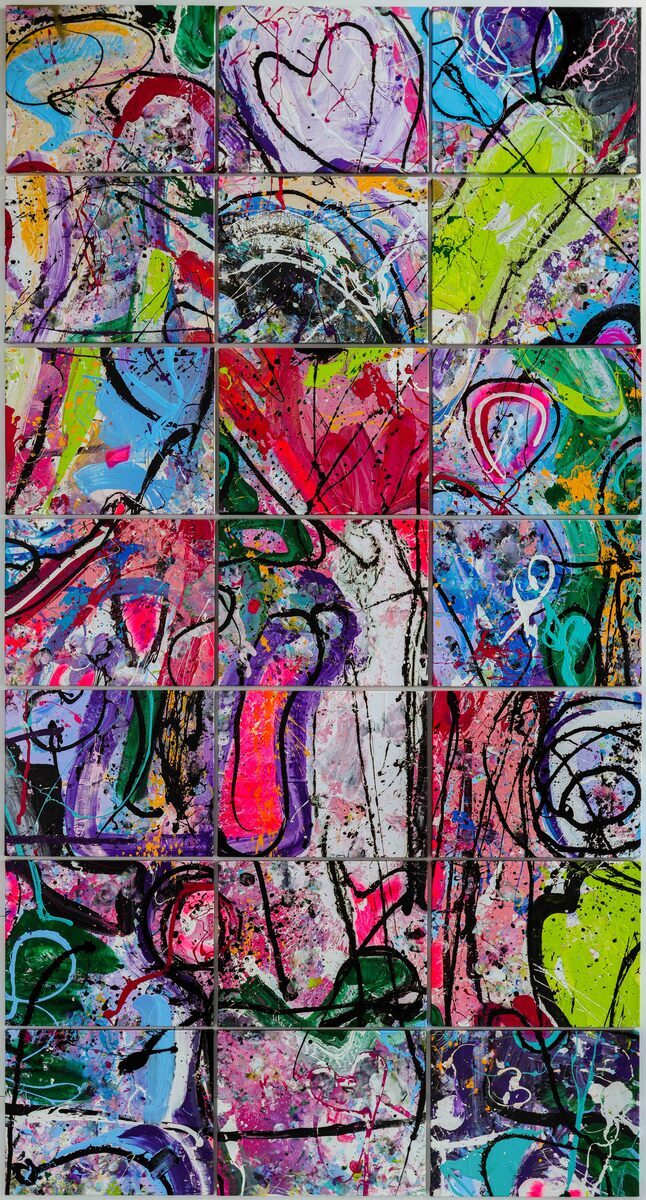
Carol Real: Lastly, I would like to ask you, what are the things you are grateful for in your life?
Sacha Jafri: Gratitude is an incredibly important aspect, and it has gained significant attention on social media with the concept of a gratitude map. Initially, I was skeptical about it, but I realized that practicing gratitude is a powerful mindset changer. Instead of complaining and viewing tasks as burdens, such as getting up in the morning, going to the gym, or participating in interviews, I choose to be grateful for these opportunities. This shift in perspective has made a tremendous difference. By remembering and acknowledging the things we are grateful for every day, our mindset transforms in an empowering and impactful way.
When we actively remind ourselves of what we are grateful for, our focus and energy align with those positive aspects. This positivity multiplies and grows, nurturing our inner selves. As a result, the other grievances and challenges in life become less significant. While they may briefly disrupt our lives, by concentrating on what we are grateful for, the overall perspective changes. Personally, I am grateful for the simple fact that I wake up in the morning. I genuinely appreciate my family, as they play numerous roles in my life. It’s challenging to excel at all of them, but if we can succeed in two or three—that’s a true measure of success. Happiness lies in understanding that the purpose of our existence is to love and be loved. That is where genuine happiness and fulfillment stem from. Everything else we chase or seek is merely a distraction. Recognizing this truth is profoundly helpful. When we express gratitude for moments of love and fulfillment, it further enhances our mindset and directs our energies toward the good things, allowing them to flourish.
What’s truly intriguing about energy is that people often overlook its significance. As human beings, we fail to realize that we are composed of energy. Yet, we constantly emit it. By focusing on projecting happiness, empathy, and love, we attract the same positive energy in return because like attracts like. Conversely, if we harbor anger, frustration, aggression, or hatred, we draw those negative energies into our lives. This understanding usually takes years to grasp, but once we do, it becomes apparent that we may have wasted significant time. However, by implementing this knowledge and constantly questioning our intentions and actions, the difference it makes is astounding. The change that occurs within and around us is remarkable. Gratitude is undeniably one of the most crucial things we should remind ourselves of every single day. It’s an immensely powerful practice.
Carol Real: Thank you sincerely for sharing your insights. This interview has been truly exceptional, just like you. We eagerly anticipate hearing more from you. Perhaps next year, you will undertake more mega projects. Our journey with you never ceases.
Sacha Jafri: Bless you. It’s been wonderful speaking with you.
Image credits: All images courtesy of the artist
Editor: Kristen Evangelista
